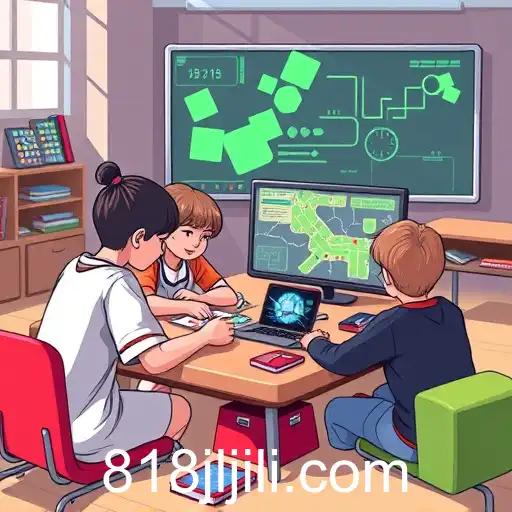In recent years, educational games have become a pivotal tool in transforming how we approach the learning process. This game category, often identified by the keyword '818jl', represents a growing trend in digital pedagogical tools aimed at enhancing engagement and knowledge retention among learners of all ages. The rise of educational games directly correlates with the increasing integration of technology in the classroom, aiming to bridge the gap between traditional educational methods and the digital preferences of modern students.
At its core, the concept of educational games is simple: to teach through play. Harnessing the intrinsic motivation provided by gaming, educational games create an interactive learning environment where students feel more connected and invested in the material. This format not only makes learning more enjoyable but also more effective, as it encourages active participation and critical thinking.
The benefits of educational games are manifold. First and foremost, they provide immediate feedback, which is essential for the learning process. This instant feedback loop helps learners identify their strengths and weaknesses and adjust their approaches as needed. Moreover, educational games are designed to be adaptive, offering personalized pathways that cater to individual learning speeds and styles.
Integration of these games into the curriculum also promotes collaboration and social skill development. Many educational games have multiplayer options or classroom-wide participation, fostering a collaborative atmosphere among students. This collaboration extends beyond simple gameplay; it encourages students to communicate, strategize, and work together towards common objectives.
Beyond academic skills, educational games often incorporate elements that promote life skills such as problem-solving, time management, and resource allocation. For example, strategy-based educational games require players to think ahead and make strategic decisions, mirroring real-life scenarios where these skills are applicable.
The versatility of educational games also means they can be used across various subjects and age groups, making them a crucial component in diverse educational settings. From math and science to language arts and history, educational games can be tailored to meet specific curricular needs, ensuring that learning objectives are met in an engaging manner.
The continued development and adoption of educational games are crucial in the context of modern education. As technology evolves, so too does the potential for creating more immersive and effective educational experiences. Stakeholders in education, including policymakers, educators, and developers, must work collaboratively to ensure that educational games are integrated effectively and equitably across all learning environments.
In conclusion, educational games, represented by the category keyword '818jl', are a testament to the innovative ways we can engage students in their learning journeys. These games have proven to be an essential component of modern pedagogy, transforming classrooms into dynamic learning hubs that empower students and prepare them for the challenges of the future.

An in-depth exploration of the impact and necessity of educational games in today's educational landscape, with a focus on their role in enhancing learning outcomes and engagement.




